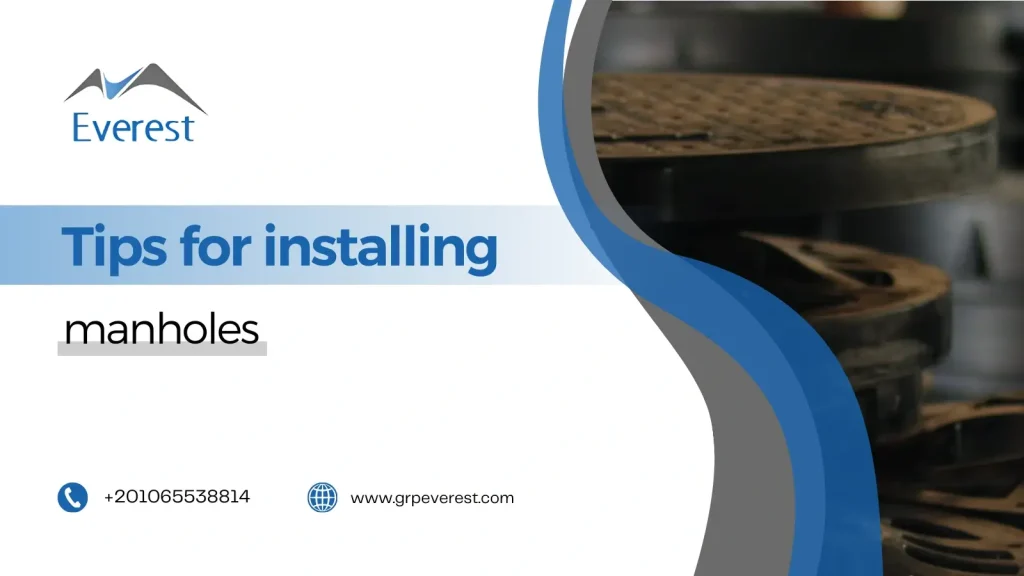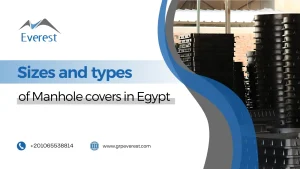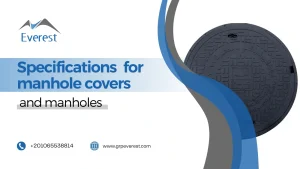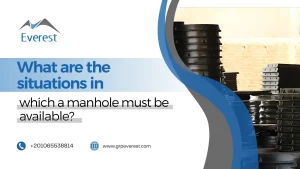Manholes are an essential part of sewer and water systems, facilitating access to underground systems for maintenance and monitoring purposes. Installing manholes correctly can have a significant impact on the efficiency and effectiveness of the system. In this article, we will review the top tips for installing manholes to ensure optimal performance and safety of use.
1. Planning and design
A. Site assessment
Before starting the installation of the inspection room, the site should be carefully assessed. Check out:
- Terrain: Make sure the floor is level and easily accessible.
- Entrance and exit: Room entrances and exits should be convenient to facilitate the entry of personnel and equipment.
B. Room design
Choose the right design for your manhole based on the expected use. The design should include:
- Dimensions: Make sure the room is sufficient to facilitate movement and maintenance. Dimensions should preferably be between 60 cm and 120 cm in diameter.
- Hydraulic system: Make sure the design of the room supports the drainage system well, taking into account the direction of water flow.
2. Selection of materials
A. Strong material
Choose high-quality materials to ensure the durability of your manhole. Popular options include:
- Concrete: Provides high strength and durability.
- Glass fiber reinforced plastic (GRP): Considered a good choice in harsh environments.
- Cast iron: Used in sheeting to withstand heavy loads.
B. Weather-resistant materials
Make sure that the materials used can withstand different weather conditions, such as humidity and heat.
3. Preparation and installation
A. Digging a trench
Before installing the inspection chamber, dig a trench that matches the dimensions of the chamber. Be sure to:
- Depth: The depth must be sufficient to reach the underground pipes.
- Extensions: Check for any other extensions in the area before digging.
B. Construction of the base
Make sure to build a stable base for the inspection room, which should be level and strong. Concrete can be used as a base to improve stability.
4. Proper installation
A. Placement of the room
When placing the inspection chamber, the installation must be vertical and accurate. Be sure to:
- Level the chamber: Use a water balance to check that the chamber is level.
- Install the chamber: Make sure the chamber is securely anchored to prevent it from moving or collapsing.
B. Connections
Make sure that all connections between the room and the network comply with the required standards. Pipes must be properly connected to avoid leaks.
5. Security and safety
A. Locking feature
Manholes must have an effective locking system to prevent unauthorized entry. Use covers with a locking mechanism to ensure security.
B. Room ventilation
Make sure that adequate ventilation is provided inside the room to avoid the accumulation of harmful gases, such as methane.
6. Maintenance and follow-up
A. Periodic inspection
After installing the inspection chamber, periodic checks should be carried out to ensure its safety and efficiency. Check for:
- There are no leaks: Look for any signs of leaks or water intrusion.
- Cleanliness of the chamber: Make sure the chamber is free of debris and dirt.
B. Modernization and improvement
Be prepared to modernize the manhole when needed. If there are changes in the drainage system or new developments, you may need to modify the design or components.
7. Compliance with standards
Ensure that all aspects of the manhole installation comply with local and international standards. This includes:
- Safety requirements: Adhere to safety procedures to minimize potential hazards.
- Environmental legislation: Ensure that the installation does not negatively impact the surrounding environment.
Conclusion
Manholes are a vital part of sewer and water systems, and their installation requires careful planning and practical advice. By considering design, selecting the right materials, and proper installation, the efficiency and safety of the system can be ensured. Investing time and effort in properly installing manholes improves performance and safety, benefiting the community as a whole.
In case you are looking for a company that helps you in implementing your project by providing the service of implementing manhole covers, Everest Industrial Company provides many manhole products such as square manhole covers GRP, round GRP manhole covers, and rectangular inspection covers, rain gutters, manhole ladders, water ducts and rain drainage galleries, and you can order any quantity or inquire about all the company’s products by contacting us by registering your data through the Contact Us link and we will contact you as soon as possible.




